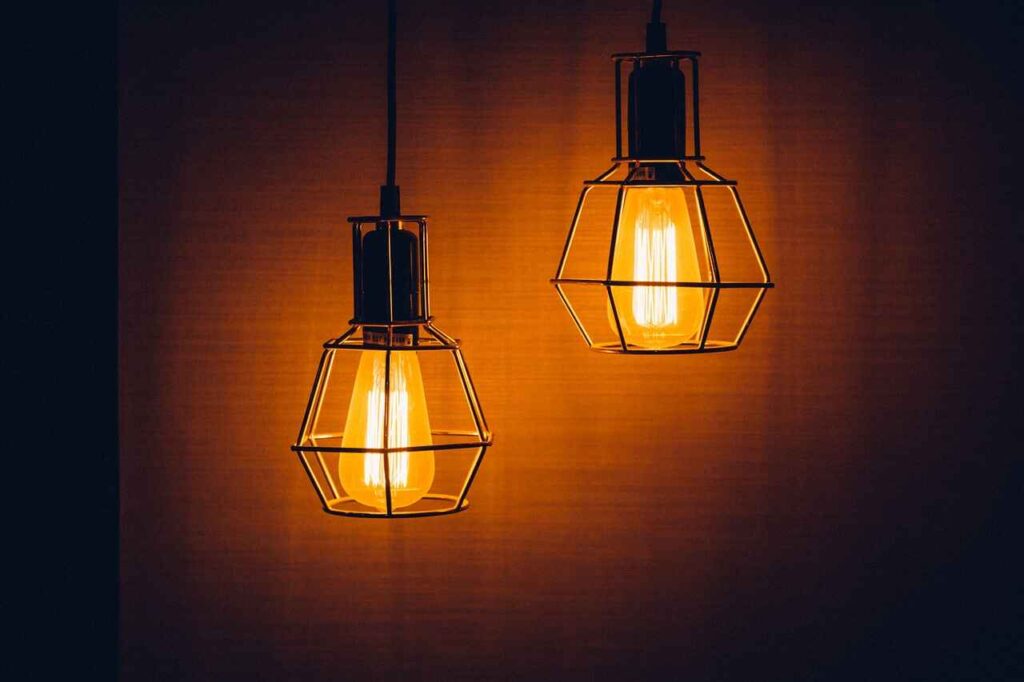Have you ever pondered how does a light bulb work. As we delve into the fascinating world of light bulb technology, get ready to solve the puzzle. This blog post will explain the physics of illumination as well as the complex internal dynamics that make light bulbs magical. By the end, you’ll have a fresh perspective on these commonplace wonders and be prepared to choose lighting wisely. Let’s examine how light bulbs operate.
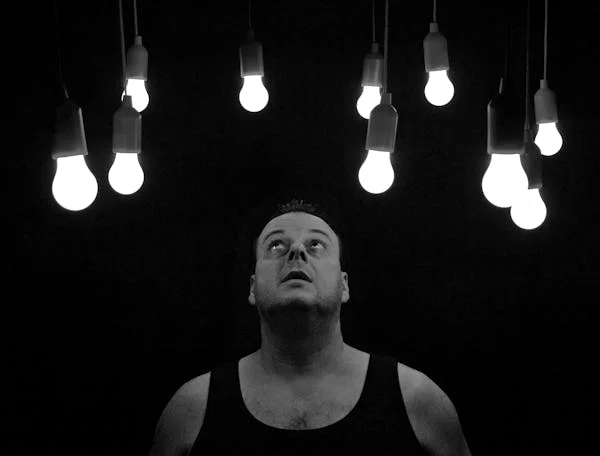
Understanding the Components
Alright, let’s start by taking a closer look at what makes up a light bulb. Picture this: inside that bulb you’ve got a tiny little wire called a filament. It’s kind of like the light bulb’s heart because it’s what makes the magic happen. Then there’s the glass bulb itself, which acts like a protective shell for the filament and the gases inside. And don’t forget about the base of the bulb, the part that screws into the socket. It’s like the light bulb’s feet, keeping it firmly in place.
Now, there are different types of light bulbs out there, just like there are different kinds of cars. You’ve got your old-school incandescent bulbs, which have been around for ages. They work by heating up the filament until it glows and gives off light. Then there are fluorescent bulbs, which use a gas and a special coating inside the bulb to produce light when electricity passes through. And let’s not forget about LED bulbs, the new kids on the block. They use a semiconductor material to create light, which makes them super energy-efficient and long-lasting.
The Science Behind Illumination
Now let’s delve into the nitty-gritty of how light bulbs actually light up our lives. Imagine this: when you flip that switch, something pretty cool happens. The electricity from the switch flows through the wires and into the light bulb. Inside, it meets the filament, which is a bit like a wire made of a special metal.
Now, here’s where the magic starts. As the electricity passes through the filament, it encounters a bit of resistance. That resistance makes the filament heat up – we’re talking seriously hot, like the middle of summer! And when things get that hot, something amazing happens: the filament starts to glow. That glow is what we see as light.
But wait, there’s more! Ever wondered why some light bulbs give off different colors of light? Well, it all comes down to the material inside. You see, different materials produce different colors when they’re heated up. That’s why you might have warm, yellowish light from some bulbs and cool, bluish light from others.
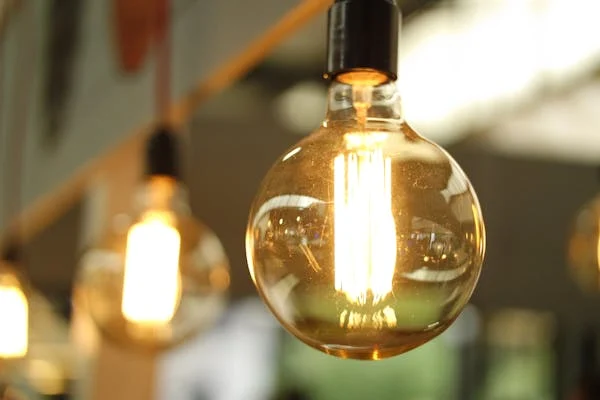
The Role of Electricity
Here we will talk about the electricity that powers our light bulbs. Think of it like the fuel that makes your car go – without it, your bulb wouldn’t light up at all!
Now, when we plug in our lamp or flip the switch, electricity flows through the wires and into the bulb. This electricity is measured in volts (kind of like the pressure of water in a hose) and it pushes the current (the flow of electricity) through the bulb.
Inside the bulb, the electricity has a job to do. It interacts with the filament or semiconductor material, depending on the type of bulb you’ve got. For incandescent bulbs, the electricity heats up the filament until it glows and produces light. For fluorescent bulbs, it excites the gas inside, creating ultraviolet light which then gets turned into visible light by a special coating. And for LED bulbs, the electricity activates the semiconductor material, causing it to emit light.
So, it’s the electricity that gets the party started inside our light bulbs, turning them from dull to dazzling with just the flick of a switch!
Evolution of Light Bulb Technology
Let’s take a journey back in time and see how light bulbs have changed over the years. Think of it like looking through old photo albums but instead, we’re checking out the history of lighting.
Back in the day, we had the classic incandescent bulbs. They were like the OGs of lighting, but they weren’t very efficient. They used a lot of energy and didn’t last very long. Then along came fluorescent bulbs, which were a bit better in terms of efficiency, but still not perfect.
But then, in recent years, we’ve seen some real game-changers. Enter LED bulbs. These little guys are like the superheroes of lighting. They’re super energy-efficient, which means they use way less electricity than old-school bulbs. Plus, they last for ages, so you don’t have to keep replacing them all the time.
So, it’s pretty cool to see how far light bulb technology has come. From humble beginnings to high-tech marvels, it’s been quite the journey!
Practical Applications and Everyday Use
Alright, let’s talk about where we actually use these light bulbs in our everyday lives. Think about your home, for starters. You’ve got light bulbs in almost every room, right? In the kitchen, you need them to see what you’re cooking up. In the living room, they create a cozy atmosphere for chilling out. And in the bathroom, well, you definitely need them for, you know, bathroom stuff.
But it’s not just homes that rely on light bulbs. Think about shops and offices too. They need good lighting to showcase their products or help employees work efficiently. And what about streetlights? They keep our streets safe at night so we can see where we’re going.
Now, when it comes to picking the right light bulb for the job, it’s like choosing the right tool for a DIY project. You’ve got to think about things like brightness, color, and energy efficiency.
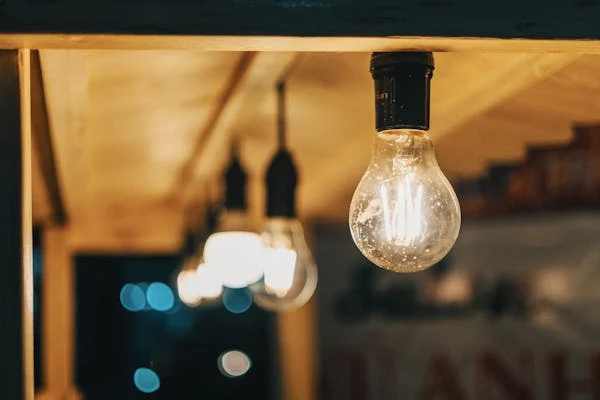
Troubleshooting and Maintenance
Think about what to do when your light bulb isn’t playing ball. Sometimes, they can be a bit temperamental, just like us humans!
So, picture this scenario: you flick the switch, expecting a burst of light, but instead, you’re greeted with a flicker or nothing at all. Don’t panic! First off, check if the bulb is properly screwed into the socket. Sometimes, it just needs a little twist to make a proper connection.
If that doesn’t do the trick, it might be time to get your detective hat on. Check the wiring and the switch to make sure everything’s in working order. If you’re still scratching your head, it could be a sign that your bulb has reached the end of its lifespan. Time for a replacement!
Now, when it comes to keeping your bulbs in tip-top shape, it’s all about TLC (tender loving care). Dust them off regularly, and avoid touching the bulb with your bare hands as the oils from your skin can shorten its lifespan.
Light Bulb Lifespan
Do you know how long your light bulbs are going to stick around for. Think of them like your favourite pair of trainers – they’ve got a lifespan, and you want to make sure you get the most out of them.
Now, if you want your bulbs to last as long as possible, there are a few things you can do. First off, try not to leave them on all the time – give them a break every now and then. And when it comes to cleaning them, be gentle – no need for any harsh scrubbing!
Choosing the Right Light Bulb
Alright, when it comes to picking the perfect light bulb for your home, there are a few things to consider. First off, think about where you’re going to put it and what kind of lighting you need. If it’s for reading or working, you might want something brighter. But if it’s for creating a cosy vibe in the living room, a softer light might be better.
Then, take a look at the energy rating. You want to go for something that’s energy-efficient to save both the planet and your wallet. And don’t forget about the bulb’s lifespan. You don’t want to be changing bulbs every other week, do you? So, take your time, weigh up your options, and choose the bulb that’s right for you and your home. Happy lighting!
Uses of Light Bulb at Home
Light bulbs are the unsung heroes of our homes, lighting up our lives in more ways than one. From brightening up our living rooms for cozy movie nights to illuminating our kitchens for late-night snack raids, these little wonders play a crucial role in our daily routines. Need to read a bedtime story to the kids? Thank your light bulb. Want to create a relaxing ambiance for a bubble bath after a long day? Yep, you guessed it – it’s all thanks to the humble light bulb. So, whether it’s providing practical lighting or setting the mood, light bulbs truly make our houses feel like homes.
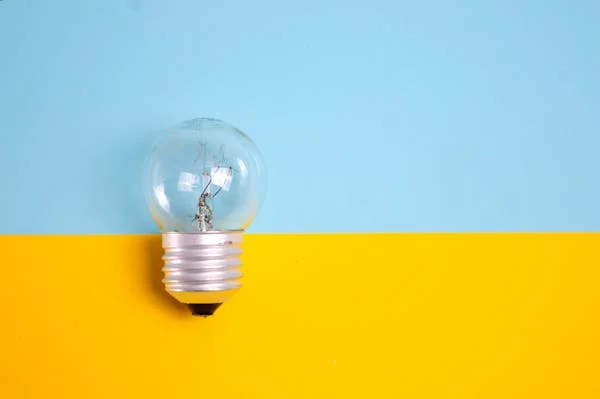
How Does a simple Light Circuit Work?
In a basic lamp circuit, a few key components cooperate. The power source, such as a battery or wall socket, comes first. This provides the electricity required to make the lightbulb glow. The electricity from the power source is then transferred to the lightbulb via cables. The circle formed by these cables allows electricity to flow continuously. A filament is a tiny wire that is located inside the lightbulb itself. The filament heats up and emits light as power passes through it.
The circuit has a switch at the end. To regulate the amount of electricity going to the lightbulb, it can be turned on or off. The lightbulb illuminates and power flows when the switch is turned on. However, the light is turned off when the switch is removed because the circuit breaks and the flow ceases. Using this straightforward setup, we can simply handle home illumination while learning the fundamentals of electricity and circuits.
Conclusion: How does a light bulb work
In conclusion, knowing how does a light bulb work illuminates the wonders of contemporary technology. Every kind of lightbulb, from the commonplace incandescent to the energy-saving LED, brightens our lives in a different way. Understanding the science underlying them helps us make decisions about how much energy we use, how much lighting we need, and how they will affect the environment. Thus, keep in mind the amazing journey of how a single lightbulb lights your world the next time you turn that switch.
Read also : what is a w5w bulb

